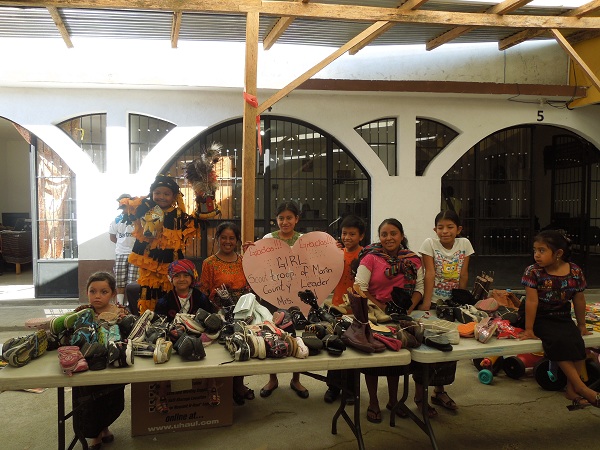My friend, Cindy Swatek, founder of Moguate and the Affording Adoption Foundation (about which I’ve written here and here), shared this very interesting essay by Michelle Li, What’s Stopping You from Being Super?: Ramblings from a “super adoptee,” posted by the large and established adoption agency, Holt International. What I love about Li’s piece is its boldness and candor, evidenced from the first paragraph:
Parents may be surprised to hear how some adoptees talk about one another. My friends categorize us as either angry adoptees or super adoptees. It’s certainly not scientific, and it’s definitely not absolute. In fact, it’s just an opinion. However, it could lead people to a good discussion.
Right there, Li tells us she cares about this subject, and through her forthright approach, convinces us we should, too. Li continues:
I didn’t come up with the term super adoptee; it found me on a balmy summer day in Korea in 2005.
I remember sitting on the balcony of a hotel in Gyeongju with a Korean adoptee I had met just days before. We were participants of a birthland tour and thrown together because of our age. As young professionals, it seemed like a good pairing.
My new roommate’s name was Mary… Mary had a life anyone would envy. She was gorgeous, graceful and carried gravitas. It was hard to believe we were the same age. After attending NYU, she moved to Tel Aviv to live an eclectic, intellectual life with her boyfriend. She appeared extremely confident, and I remember even feeling a twinge of jealousy because she seemed so put together.
But sitting on that balcony that day made me realize Mary was envious of me.
“You’re so lucky you know your birth family,” said Mary.
“Why do you think that?” I asked…
“You just seem like you’ve found closure,” Mary said.
I knew where this conversation was headed. I had been on the receiving end of this talk before. The most unpleasant experience happened in 1998 when a fresh-faced Korean social worker went rogue and contacted my birth mother without my knowledge. If it hadn’t been for her, I would not have this “closure” Mary assumed I had. When I reunited with my birth family, it not only opened a new can of worms but also put me on the defensive with some angry adoptees who thought I sold out.
“You just make me feel so far behind,” Mary continued. “You’ve gone to Korea camps, you know things about Korea. You even know the language. I know nothing, and I’m so overwhelmed.”
“You’re not behind–”
“You’re like this super adoptee!” she interrupted.
And there it was. Though I had talked with adoptees about this before, Mary was the first person to call it like that. Super? It didn’t sound like a compliment. And, it’s not like I had been trying to be anything in the years leading up to that moment.
Also wonderful about Li’s essay is that it addresses her reunion with her birth family. As a writer, I often long to write in detail about the relationships our family has with our children’s birth parents. As an adoptive mother, I respect that the details of those stories are not mine to tell. Thus, for now, I write in generalities. But as an adult adoptee, Michelle Li can talk about her experience with specificity, and she does:
“If you think finding closure happens when you meet your birth family, you’re wrong,” I said [to Mary] reassuringly. “In fact, sometimes it complicates things and can even be more confusing.” I went on to tell her about my failed attempts to get medical records or learn much about my family history. To this day, I still don’t know my exact birthplace. If you know anything about Korean people, you know they’re pretty good at avoiding awkward conversations. It’s just the culture, I suppose.
I told Mary how my Korean family lovingly added extra Korean pressures on me – whether it was to lose weight, send them money, or date a Korean boy. They even wanted me to get rid of the mole on my face because they thought it was ugly. Something else to learn about Korean people – they’re proud of you, they just don’t say it. And, they never beat around the bush.
Even after our reunion, it took a couple years for my Korean family to even tell their extended family about me. They were too ashamed to tell everyone right away. I understood, but at the same time, it sort of felt like another rejection.
***
As I told my story to Mary, I could see a lightbulb go off in her expression.
“Wow,” she said. “I had no idea how hard it would be for someone like you, too.”
I told her then, that sometimes I thought it would’ve been easier to not know anything.
***
Personally, “closure” is a word I like to avoid when it comes to adoption stories. I don’t feel like we ever really get it because our stories never end. We feel differently about it as we reach a new milestone. Yet, for me, post adoption services, like camps and support groups help me navigate my feelings and give added confidence.
Michelle Li’s perspective is not the “only” perspective on this topic, but it’s a considered and insightful one. I appreciate her allowing this reader to look into the mind of at least one person who is adopted, and to see how she thinks.


 ShareThis
ShareThis




 ShareThis
ShareThis

















